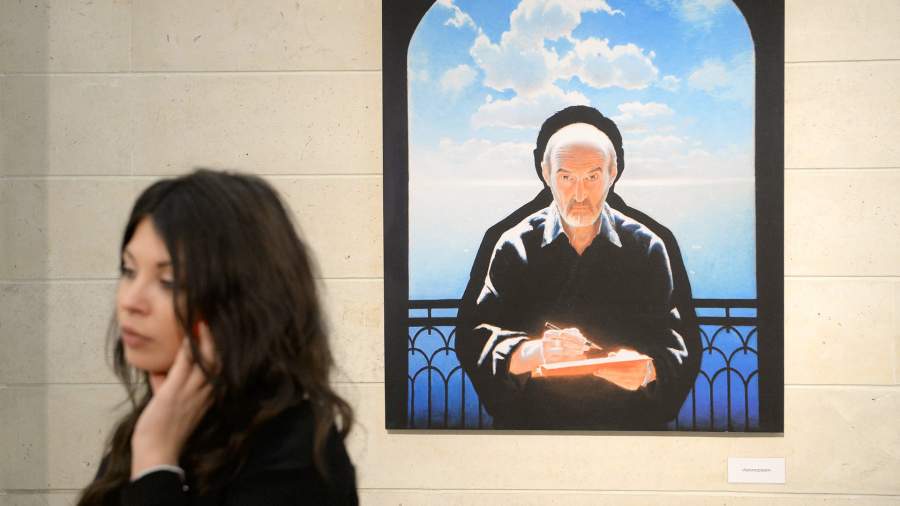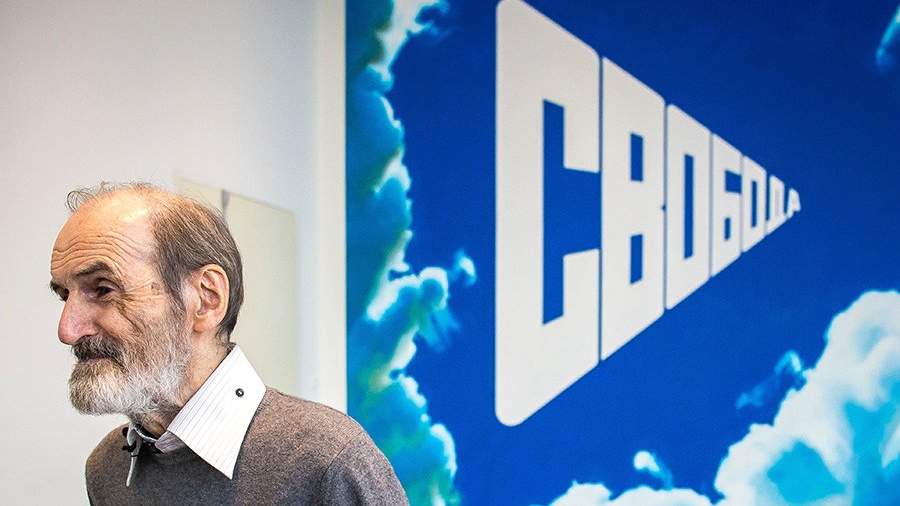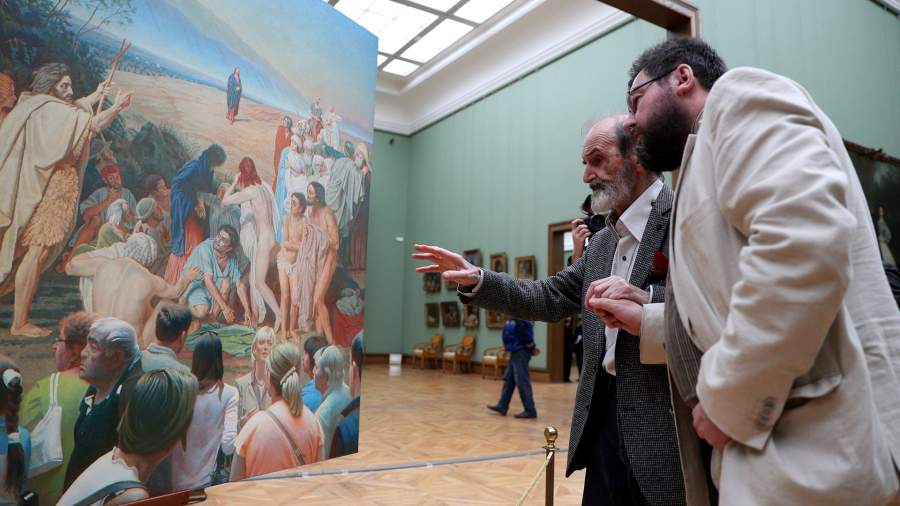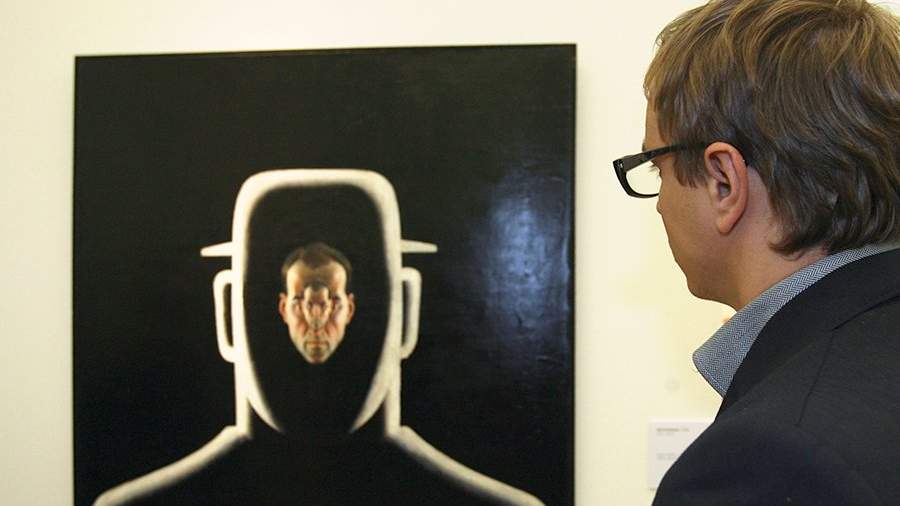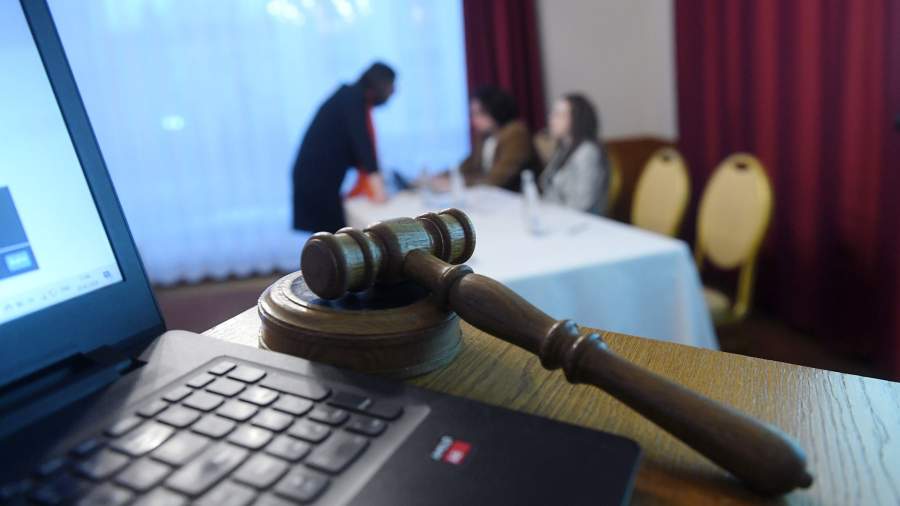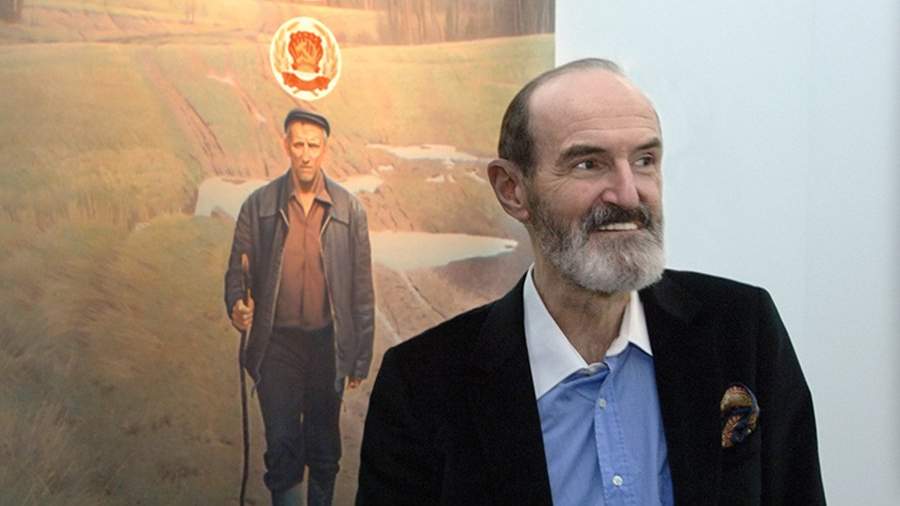Erik Bulatov’s paintings will soon decorate a metallurgical plant in the city of Vyksa. The artist expressed his attitude to the pandemic with the work “Hope”, which will be placed on the cover of the September issue of Vogue magazine. On the eve of his 87th birthday, in an interview with Izvestia, Erik Bulatov told why he considers the market to be a terrible thing, and compares installations to an operetta.
– For six months now, the whole world has been living in a pandemic, which, it seems, has not said its last word. How do you deal with this test? What has changed in your life?
– In fact, nothing. All this time, my wife Natasha and I spent in Paris. Time is not wasted. Every morning I went to the workshop and worked as best I could. I finished the painting “White Light”, which was very important for me, the name of which has two meanings: light itself and light as the whole world.
– Are you and Natasha law-abiding people? Wearing masks? Do you keep the distance in public places?
– We are 100% law-abiding and do not share the protests of those who are critical of all kinds of prohibitions. We managed to walk a little around our Parisian home. Until we got to the Louvre, although the museums are open. All the everyday difficulties and troubles of this time are on Natasha’s shoulders: going to shops and so on. I have problems with my eyes, conjunctivitis has developed. Now, thank God, everything is gone.
– Six months ago, you considered the current situation with COVID-19 terrible, but still not hopeless. Since then, has something changed in your attitude towards the pandemic?
– The Russian edition of Vogue magazine commissioned me for the September issue of the work “Hope”, in which I expressed what this word means to me. It seems to be moving through the clouds to the clear blue sky. Although I do not feel like an optimist in any way, there is always hope for me. Do not be discouraged and give up.
– You seem to be going to Russia soon?
– In the Nizhny Novgorod region there is the city of Vyksa, which houses a giant metallurgical plant. I was offered to reproduce my paintings on a factory wall 114 m long and 20 m high. Now it is technically possible to enlarge the original many times without changing anything in it.
I chose three works for this: in the center “Stop – go”, and on its sides – two parts of the painting “Barn in Normandy”: a view by day and a view by night. Natasha and I are going to fly to Vyksa for Opening Day, which will take place on October 2. In addition, in Vyksa they want to reorganize the local museum and present contemporary art in it, including my works.
– “I live and see. I don’t turn away and don’t lie ”is your creative credo, which you formulated many years ago. Never cheated on him?
– This principle is actually not a matter of choice for me, but of internal necessity. I try to match. Your path of movement is not a wide road, but a narrow path, it is difficult to go forward along it. You are constantly stumbling, you can slip. If you take a step to the side, you will find yourself either in a puddle, or in a ditch, or in mud. To go further, you need to constantly return to the same path.
– In documentaries dedicated to you, you speak of the Tretyakov Gallery with particular tenderness. Is she your alma mater?
– For me, the Tretyakov Gallery has always meant a lot, all Russian art is associated with it. Apart from her, for a long time nothing else in painting existed for me. Even now I do not consider the Tretyakov Gallery and the Russian Museum in St. Petersburg to be equal, it simply supplements it.
– You constantly live in Paris, and you call Moscow your city, you have created the emblem “The Best City of the Earth” for its 865th anniversary. Isn’t there a contradiction in this?
– Maybe there is. I love Paris very much. I feel good here, but I’m still an outsider here. And Moscow is really my city. Good or bad, but mine.
– They say that only time puts everything in art in its place. But isn’t it people (art historians, museum workers, curators) in decades or centuries will pass a verdict – this master should go to the Louvre or the Hermitage, and this one should be thrown off the ship of our time?
– No, that’s not true at all. Today these curators decide what and where, but they, like me, of course, do not know what will happen tomorrow or in a hundred years. One way or another, but I am convinced that time plays a decisive role for art, determines its place in the minds of people. One becomes interesting, the other, on the contrary, ceases to be.
Time never stops, everything changes in our understanding and in assessments. There is nothing frozen once and for all. Of course, Michelangelo and Leonardo remained for centuries. On the one hand, I cannot say that I am an optimist who believes that everything is going for the better. On the other hand, I see that time brings clarity.
– “Why a man?” – you consider this question to be the most important for yourself in art. Did you manage to find an answer to it to some extent?
– For myself, I know exactly why I am and for what. I am an artist and do not mean anything outside of this concept. Art is my everything. It is more important than life.
“I miss Rafael on my knees,” Alexander Blok wrote to his mother from Italy. You don’t have much love for Raphael either. But did he not take forever a place in the pantheon of the greatest geniuses?
– Raphael is treated differently today than in the 19th century. He is no longer perceived as a kind of absolute ideal of harmony and beauty. There is even something vulgar in some of his works. For me, Raphael is very different. The author of the frescoes in the Vatican, especially the “School of Athens”, is the greatest, whom I love very much. His oil paintings are a completely different level, they are not interesting to me.
In the case of Raphael, a conflict arose, in which a serious border was drawn between a great artist and a wonderful master, but on a different level. Be that as it may, I can not say that I am indifferent to Raphael.
– Once you called the market a terrible thing. But the whole history of art is inextricably linked with him. Nothing better was invented: brilliant artists often worked to order. Inspiration is not for sale, but can painting be sold?
– Even necessary. It all depends on each specific case – who orders, what is the nature of the order and the relationship between the customer and the artist.
– Recently, a self-portrait of Rembrandt went under the hammer at an auction for $ 18.7 million, and a little earlier the creation of the fashionable pop artist Andy Warhol – as much as $ 105.4 million. Is this also the result of the invisible hand of the market?
– These are his grimaces. Very often, frenzied prices at auctions are the result of two ambitious money bags competing with each other – who will win. Then the price can jump to unimaginable heights. But it is by no means a sign of quality.
– I remember that you compared installations with a musical or an operetta. How do they get along with the classic picture today?
– There is nothing wrong with an operetta, and a musical can be wonderful. However, in no case should they cancel either classical opera or theatrical performance. What I do is painting or painting, which remains a fulcrum for me. For God’s sake, even if there is an installation, I am not against diversity in art. It is bad when one thing claims a monopoly, declares itself as the main and only one.
– Why don’t you see a big difference between abstract and figurative, that is, objective, art?
– I have been doing a lot to carry out the transformation of abstraction into concreteness and, conversely, concreteness into abstraction. This is exactly what happens in some of my works. This uncertainty seems to me very important both in nature and in art. I think that I used the possibilities of the painting, which previously remained unknown or unnoticed.
– In the Soviet Union, you earned your living by designing children’s books. Would you like to illustrate today some of the Russian writers who are most in tune with you?
– I have never illustrated classical literature and am not at all sure that this should be done. He designed only books for small children – fairy tales by Perrault, the Brothers Grimm or Andersen. Pictures can be as important to them as the text itself.
– In recent years, have you had any discoveries at other people’s exhibitions?
– No, I haven’t discovered any new names. Which of the contemporary artists I loved, those I still love – Anselm Kiefer, David Hockney. No others.
“Good art is the result of a good school, and not just an innate genius,” said the famous artist Vasari. Well, Picasso did not exhaust himself too much with his studies and at the age of 19 he began to exhibit.
– When I was studying at the Surikov Institute, my teacher Petr Dmitrievich Pokarzhevsky helped or at least did not interfere with doing what was internally necessary for me. Yes, you need to learn to draw. To express your individuality, you first need to master the craft. Otherwise, you will be completely helpless. This teaching of drawing is the mastery of an artistic craft. It is not art yet. This difference should be understood by both teachers and students.
If you receive a school or college education, you will only be a craftsman. And that in itself is wonderful. Is it bad to be a good artisan? But you have to overcome the next stage yourself. I did not study with Vladimir Andreevich Favorsky at the institute, but he was my main teacher, my school. He taught me not to write, but to think, to understand art, what I do and why, and not just to feel it.
– On September 5 you will be 87 years old – a significant date. What were the happiest moments in your life as an artist?
– The first – when I picked up oil paints. It was in the village of Bekhovo, next to the Polenovo estate museum, where, together with the Moscow Central Art School, I was in practice in 1948-1949. Then I was still painting in watercolors. One day a high school friend of mine gave me a sketchbook with oil paints, and I went to paint from nature in a pine grove. I had the feeling of a miracle when I saw that I was putting the sky in blue, and a tree in orange. This happens only once and then never repeats.
The second time an incredible feeling of happiness arose when I was working on the canvas “I Am Coming”. It seemed to me that I was not drawing clouds, but that I was doing them – alive and real. And finally, the third happy moment – my first exhibition in my life, it was held in Zurich with great success in 1988. Then I saw my paintings put together for the first time. After her, they immediately began to invite me to different countries.
– What would you like to wish yourself for your birthday?
– Stay in good working order so that I can continue my business. Until the very end.
Erik Bulatov is one of the most sought-after Russian artists and graphic artists. In the Soviet years, almost all of his paintings ended up abroad with the stamp of the Ministry of Culture “Permitted for export. Has no artistic value ”. Subsequently, the auction prices for his work exceeded € 1.5 million. Today, Bulatov’s canvases are presented in the Tretyakov Gallery, the Russian Museum, the Georges Pompidou Center in Paris, the Albertina Museum in Vienna and other collections. Author of the book “I Live Further”. Chevalier of the French Order of Arts and Letters.
